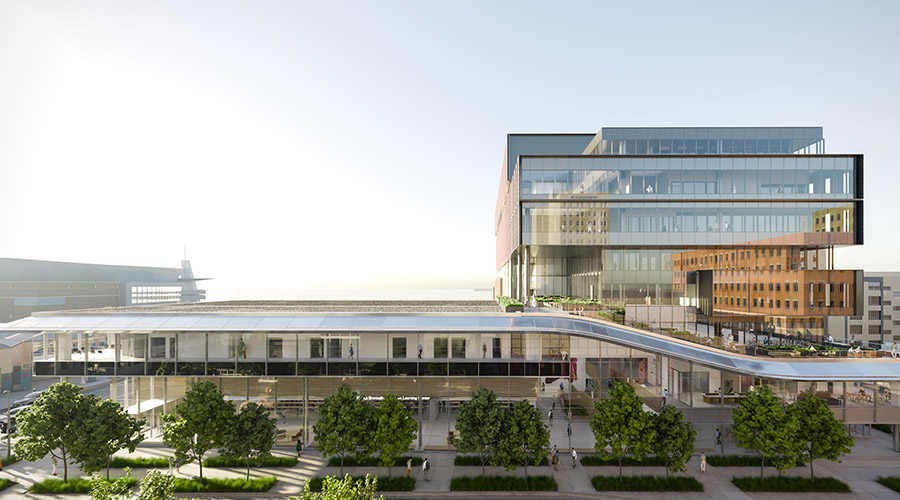Washington, DC— The City Council of Cambridge, Mass., voted unanimously on Monday to approve the Building Energy Usage and Disclosure Ordinance (BEUDO), requiring the benchmarking and disclosure of building energy performance for large commercial, institutional, and multifamily buildings. In passing the ordinance, Cambridge joins its neighbor, Boston, along with eight other major U.S. cities—Austin, Chicago, Minneapolis, Philadelphia, New York City, Seattle, San Francisco, and Washington, DC—two states, and one county in enacting laws to cut energy waste, lower utility bills, and reduce greenhouse gas emissions.
Cambridge’s new ordinance addresses energy and water use in commercial and institutional buildings that are 25,000 square feet or larger in size, along with multifamily buildings that have 50 or more units. Municipal buildings over 10,000 square feet in size also are included in the ordinance, which requires owners of the designated property types to annually benchmark and report to the City their properties’ energy use, water use, and building information via the U.S. Environmental Protection Agency’s (EPA) Portfolio Manager tool. The ordinance will be phased in for the various building types, with municipal buildings reporting their data by the end of 2014. Starting in the second year of reporting, data collected will be disclosed annually through a public City website
“IMT applauds the City of Cambridge for passing the Building Energy Use and Disclosure Ordinance,” said Cliff Majersik, Executive Director of the Institute for Market Transformation (IMT), a Washington, DC-based nonprofit that promotes energy efficiency in buildings. “Building energy use produces two-thirds of Cambridge’s total greenhouse gas emissions, and benchmarking data will create much-needed transparency in the marketplace to help drive owners, tenants, and investors to make better decisions about their buildings’ energy use. Cities such as Cambridge that are harnessing the power of building performance data are at the forefront of a movement that is transforming our built environment.”
“In passing a building energy and rating disclosure ordinance, the city adds its voice to a growing chorus of municipalities throughout the country who support building energy usage disclosure,” said Sue Coakley, Executive Director of Northeast Energy Efficiency Partnerships (NEEP). “These ordinances afford building owners the opportunity to make informed decisions based on the energy usage of a building, which makes it easier to identify energy efficiency investment opportunities. Municipally enabled disclosure of these trends sends more accurate signals to market actors than were previously available, creating a market-based mechanism for encouraging building energy efficiency.”
While efforts to improve the energy use of buildings are often hampered by the invisible nature of energy use, disclosure ordinances such as Cambridge’s BEUDO shine a spotlight on performance to identify opportunities to cut waste and improve building performance. Buildings remain the largest user of energy in America, with a significant amount of the energy use being wasted due to poor operations. By providing information about energy consumption in a region, benchmarking data can help guide energy efficiency improvements. Research has shown that building owners who benchmark their buildings are more likely to make energy efficiency improvements than those who don’t. A 2012 analysis by the U.S. Environmental Protection Agency of 35,000 benchmarked buildings found that those buildings reduced consumption by an average of 7 percent over three years, and a 2012 report commissioned by the California Public Utilities Commission found that benchmarking was highly correlated with building energy improvements and management actions, and was a strong catalyst for customer participation in utility rebate and incentive programs. In addition, an anecdotal study by IMT of markets with existing benchmarking laws found that local businesses were experiencing significant new demand for energy efficiency services and many businesses indicated that they attribute expanded payrolls and the hiring of new employees due to energy benchmarking laws.
Located across the Charles River from Boston, Cambridge is the fifth-largest city in Massachusetts, with a population of more than 105,000. It is home to Harvard University and the Massachusetts Institute of Technology.

 Barriers to Infection: Rethinking Mattress Cleaning
Barriers to Infection: Rethinking Mattress Cleaning Over 1 Million Individuals Affected in Community Health Center Data Breach
Over 1 Million Individuals Affected in Community Health Center Data Breach Prospect Medical Holdings to Sell Crozer Health to Non-Profit Consortium
Prospect Medical Holdings to Sell Crozer Health to Non-Profit Consortium The Top States for Pest Infestations
The Top States for Pest Infestations Ground Broken on Wichita Biomedical Campus Project
Ground Broken on Wichita Biomedical Campus Project